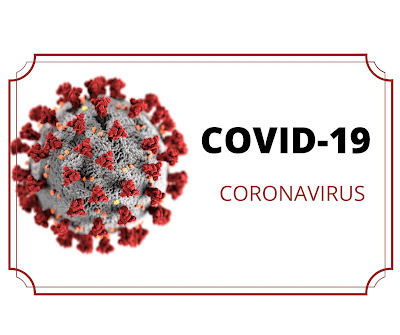How to know Symptoms of Coronavirus in Children?
How to know Symptoms of Coronavirus in Children?
Researchers say kids have many of the same COVID-19 symptoms as adults, but they tend to be milder. Common symptoms in children include:
Fever: 56%
Cough: 54%
Shortness of breath: 13%
Some children and teens who are in the hospital with the disease have an inflammatory syndrome that may be linked to the new coronavirus. Doctors call it pediatric multisystem inflammatory syndrome (PMIS). Symptoms include a fever, a rash, belly pain, vomiting, diarrhea, and heart problems. It’s similar to toxic shock or to Kawasaki disease, a condition in children that causes inflammation in blood vessels.
How to Check for Fever
Your regular body temperature may be higher or lower than someone else’s. It also changes throughout the day. Doctors generally consider a fever in an adult to be anything over 100.4 F on an oral thermometer and over 100.8 F on a rectal thermometer.
If you think you’ve come into contact with the virus, or if you have symptoms, isolate yourself and check your temperature every morning and evening for at least 14 days. Keep track of the readings. A fever is the most common symptom of COVID-19, but it’s sometimes below 100 F. In a child, a fever is a temperature above 100 F on an oral thermometer or 100.4 F on a rectal one
Common Symptoms
Researchers found that the most common symptoms among people who were hospitalized with COVID-19 include:
Fever: 99%
Fatigue:70%
A dry cough: 59%
Loss of appetite: 40%
Body aches: 35%
Shortness of breath: 31%
Mucus or phlegm: 27%
Symptoms usually begin 2 to 14 days after you come into contact with the virus.
Other symptoms may include:
Sore throat
Headache
Chills, sometimes with shaking
Loss of smell or taste
Congestion or runny nose
Nausea or vomiting
Diarrhea
pink eye (conjunctivitis)
headache that’s unusual or long lasting
Emergency Symptoms
Call a doctor or hospital right away if you have one or more of these COVID-19 symptoms:
severe difficulty breathing (struggling for each breath, can only speak in single words)
Constant pain or pressure in your chest (constant tightness or crushing sensation)
Bluish lips or face
Sudden confusion.
Take these everyday steps to reduce exposure to the virus and protect your health:
wash your hands often with soap and water or alcohol-based hand sanitizer
sneeze and cough into your sleeve
avoid touching your eyes, nose or mouth
avoid contact with people who are sick
stay home and self-isolate if you are sick
Physical distancing
Everyone in should practise physical distancing to reduce their exposure to other people — this means you should:
stay home as much as possible – go grocery shopping once a week or less, only visit pharmacies and banks when necessary and place orders over the phone or online
do not use public transportation, taxis or rideshares
do not go to work, school or other public places
your health care provider will tell you when it is safe to leave
Cover your cough and sneeze
staying at least two metres away
covid 19 is spread mainly from person to person through close physical contact.
staying at home and avoiding contact with other people to help prevent the spread of disease.
Get tested for COVID-19
Limit the number of visitors in your home
only have visitors who you must see (for example, for medical reasons or to drop of groceries) – do not invite people over to socialize
keep necessary visits short
This means that you should only leave your home or see other people for critical reasons (like a medical emergency). Where possible, you should try to get what you need:
online
over the phone
from friends, family or neighbours
cases are mild and most people who get it will recover on their own. Typical treatment for common coronaviruses includes:
drinking plenty of fluids
getting as much rest and sleep as possible
using a humidifier or taking a hot shower to help with a sore throat or cough

Comments
Post a Comment